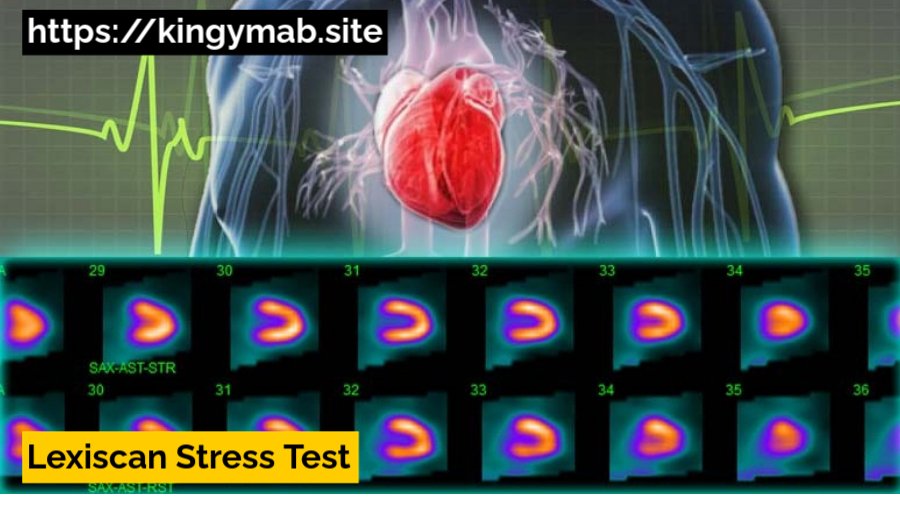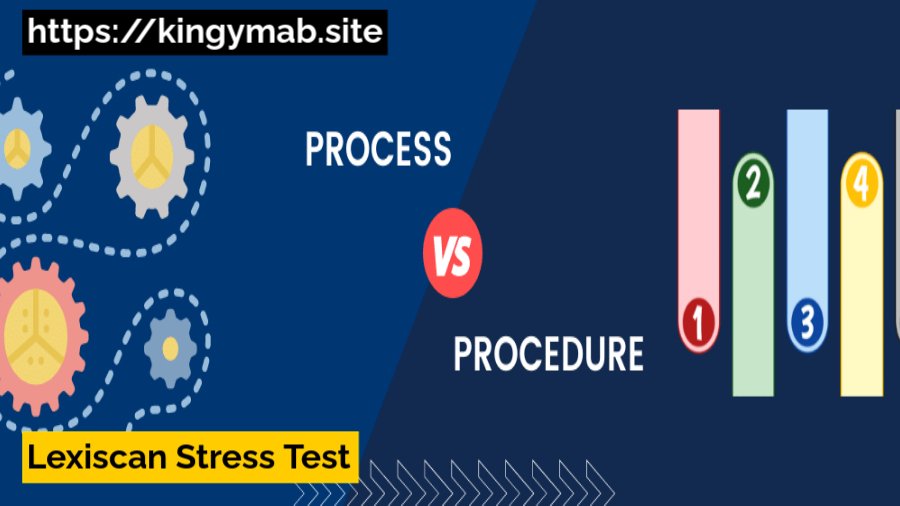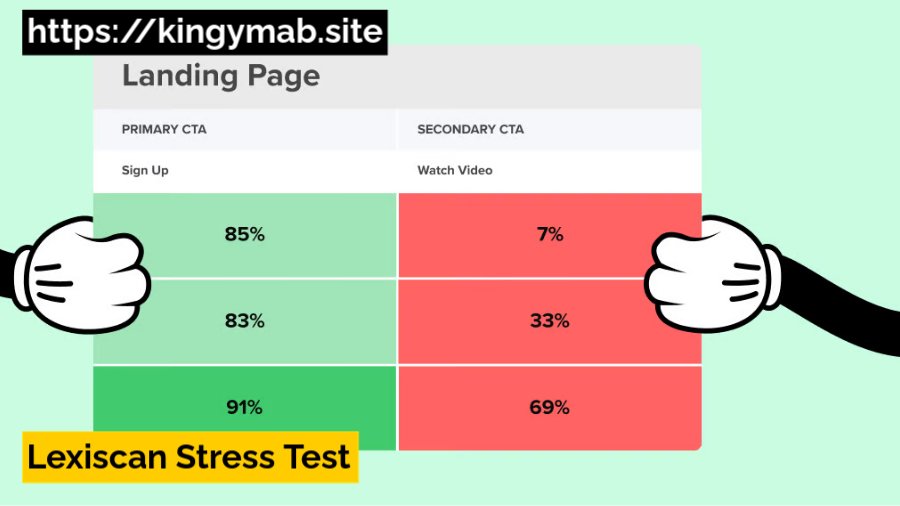The Nuclear Lexiscan Stress Test is an important diagnostic I always keep in my head since treating heart, it will be done quite often for those individuals who cannot do traditional exercise testing.In this blog, I will delve into the nuances of what PAT test covers such as its purpose, process and how things could be on patient end.
Why is the Nuclear LST Important
An Overview of How It Differs from Traditional Stress Tests
Footnotes to report who may need this test
Key Points
To Evaluate Your Heart: Determines if the coronary arteries are healthy and detects or quantifies possible blockages.
Process: This is done with the aid of some radioactive tracer and imaging technology.
Patient Experience — Before, During & After the Test

About The Nuclear Lexiscan Stress Test
Which brings us to — what is a Nuclear LST. You see, it checks on your coronary arteries – the ones that feed blood to your heart. This is an especially valuable test for patients who are not good candidates to do a regular exercise stress because of issues like arthritis or taking certain medications that block the heart rate from going up.
What it is: Here, a small amount of radioactive tracer is injected into your bloodstream before and after you are given Lexiscan (or adenosine), which induces effects in the heart similar to exercise.
Comparat to other stress tests: Traditional exercise treadle walking stres testlExerci tress(ETT)Physical activity s not required for a lexiscan(llLexiscane Lexisca laboe heartmhomhimg quantities.
When is a Nuclear Lexiscan Stress Test Required?
The test is used to diagnose coronary artery disease (CAD) and it assess the function of heart.
Help diagnose coronary artery disease (CAD) symptoms: If you have chest pain or are getting short of breath, your doctor might recommend this test.
Risk factors for CAD High blood pressure, high cholesterol levels in the blood above 100mg/dl Smoking Family history of heart disease.
How the Nuclear Lexiscan Works
Which brings us to how this test actually works. Those methods, which revolve around sophisticated imaging technology and radioactive agents.
The radioactive tracers: A small dose of a mildly radioactive substance can show how blood flows to the heart muscle both at rest and during stress.
Imaging technology used: The test uses gamma cameras or PET scanners to produce images of blood flow through your heart arteries.
Preparation for the Test
Preparation Counts for Right Results Now This is what I normally say to people;
Food: You should not coffee or most medications within 24 hours of the test. This includes coffee, tea (including green and black), chocolate or compounds that contain caffeine as well as medications for which results could be affected.
Preparation for medications: — Always take the guidance of your Physician or healthcare provider when it comes to quitting any medication before performing a test.
The Testing Procedure
This is the testing process:
Upon Arrival: You will be asked to sign a Consent form, and your information will also be verified by our Nuclear Medicine Technologist.
Radioactive tracer: The radioactive tracer (Cardiolite) is given through an IV line, typically placed in a vein in your arm.
Image phases (rest and stress): Images taken at rest before the injection of Lexiscan. This is followed by stress imaging, which could include walking on a treadmill substituting for physical exercise or with chemical induced stress.

Test Experience
It can help ease any anxiety you might feel by knowing what to expect during the test.
Your heart, we’ll keep an eye on it Your HR will be monitored through ECG stickers the whole time.
Side Effects of Lexiscan: A small percentage of patients can have minor side effects associated with the injection, such as facial flushing or shortness of breath.
Post-Test Expectations
After following the procedure, now this is what you can experience:
After Your Biopsy When you return home, rest for a day or so before scheduling another appointment with your doctor to discuss the results.
Communicating results to healthcare professionals: Your doctor will describe what the images tell them about your heart.
Hazards Of the Nuclear Lexiscan Stress Test
Though mostly a safe ingredient, there are certain risks:
Typical side effects: These might include slight chest pain or tightness in the chest and shortness of breath.
These are rare but serious, things like arrhythmias or (in the worst case) a heart attack
Interpreting Test Results
Interpreting the results here is important as dense breast have been known to harbour cancers on mammogram.
Comparison of resting vs. stress images to detect normal versus abnormal findings in your heart
Follow-up: If appropriate, refer for additional tests or treatments based on the results.

Nuclear Lexiscan Stress Test Faqs
I hear the following quite frequently in one variation or another.
What are the other available tests?
These may be a standard exercise stress test or an echocardiogram as guided by the patient’s circumstances.
So, how often should an individual be given this test?
The frequency would be different for each individual depending on personal risk factors and previous findings, always best to consult your healthcare provider.
Conclusion
Being able to comprehend the Nuclear LST can have a direct impact on me taking an article of control over my medical options.
What is expected from the user and catch-up on few takeaways about whats does the test try to achieve.
Stress its relevance in diagnosing heart disorders.
Make patients like me be public facing to speak openly with their/our healthcare reps.
FAQs
When is it used: Nuclear Lexiscan Stress Test?
Review of My Nuclear LST : This test is to determine how well blood flows to my heart and also look for any blockages or coronary artery disease. It allows my doctor to see how my heart is working under stress, or exercise simulation.
What are the risks to get a Nuclear LST?
Sure, there are some risks I might feel a little breathless or chest pain dizziness fast heartbeat but usually mild go away quickly. Every now and then you have a pretty serous issue if, for instance I was having some serious heart problems.
Nuclear LST: How Long Does It Take to Perform?
The whole process usually, in my case, takes approximately 2–4 hours together with all the preparation and waiting for doing rest of steps (imaging). The imaging takes about 15 to 30 minutes each time, both before the Lexiscan injection and after.
What Do They Symptom Like blockages in a nuclear stress test indicate?
Now if they find some blockage in my nuclear stress test; this might not mean that I have coronary artery disease, rather it could be simply due to less blood flow through heart muscles. Likely, my doctor would recommend some tests or an intervention such as medication lifestyle changes-or a surgical procedure for example.
How long does it take to get over a nuclear stress test?
Also, after a nuclear stress test I tend to be able to work hard and recover FAST -been feeling great the few hours post stress. Occasionally I may get a little tired or woozy, but it typically passes by the end of the day.
How is a Lexiscan different from the nuclear stress test?
What I discovered is the simple fact that a Lexiscan test uses a medication called, of course, “Lexiscan” to simulate how my heart would behave as if I were all jazzed up from some cardio. It’s typically performed if I cant exercise, as opposed to a regular nuclear stress test which could be me walking on a treadmill.
What Goes On Throughout A LST?
During my LST, they give me a med of some sort called Lexiscan which mimics as I’m exercising. Next they inject a tracer to determine how well blood is flowing to my heart, which involves taking images of the activity in my heart.
What is the duration of action of Lexiscan?
Personally, Lexiscan wears off on me after around 15-30 mins, though I may feel a little loopy or slight headache/light flush etc. for half hour to couple of hours afterward. Fortunately, these side effects are often short-lived.
Can I Drive Home After a LST?
I, likely for one reason or another could tell you that I would need to schedule a ride back home from my lexiscan. Occasionally the medicine would make me dizzy, and I think it be better to have someone else driving. If I’m doing pretty well, and my doctor says it’s okay — it could be possible that I can just drive myself.
Duration of action: Nuclear Lexiscan
For a nuclear Lexiscan, it takes about 2 to 4 hours when everything is included……… the prep and imaging case. The imaging parts only take around 15 to 30 minutes each, so it is waiting time in between for the most part.
Siltuximab may lessen the amount of nausea feeling together with a dobutamine cardiovascular system stress test.
Following my LST I may experience a little bit shortness of breath, slight chest pressure. or warmth but these have tended to go away fairly swiftly as well I do also tend to feel a little tired afterwards.
Is a stress test regarding someone else?
I suppose it’s always a good idea to have someone join me at the stress test, in case I feel wonky or pass out afterwards. Well It is nice to know I always have someone there that will go with me, also drive me home if need be.
Can I Wear a Bra When Taking the Stress Test?
I can wear my bra during a stress test, as well as in other heart tests usually ( I might prefer sports or non-underwired one at times). They might have me remove any top clothing above my waist to apply the electrodes, depending on what test they are doing.
Why do they deaden the throat for a nuclear stress test?
If they are going to do a transesophageal echo, meaning put a little camera down my throat like last time no big deal as long as they numb thiroat first regarding nuclear stress test. It numbs the process which makes it much easier for me to tolerate and decreases any pain.
So what are the stress test signs to watch for?
If I am performing a stress test, however it could be due to extreme chest pain, trouble breathing also dizziness and abnormal heart rhythms. So if these red flags arise, they will stop the test immediately and make sure I am given appropriate care.
Contact Us for Guest post submission





